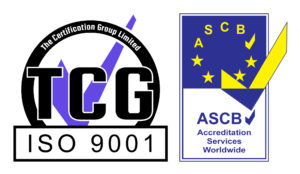Self Leveling Floor Screed
Sub Floor preparation with self leveling floor screed
Hi, I’m Andy Parkin and I am the Managing Director of Multi-Award Winning Company Speed Screed. I am often asked about self-leveling floor screed and how it can help remove any small irregularities on the surface of a base to improve the look and durability of a finished floor layer.
Self-leveling floor screeds are one of the easiest compounds to mix and apply and can be used in thicknesses up to 50mm. For those needing a thicker layer, there are products available that can achieve this but these are specialist products rather than the normally found self-leveling floor screed mixes.
Self-leveling floor screed is suitable with most base layers
The screed can be applied to most types of base layers but it should always be topped with a final flooring layer. These screeds are generally not for use as a final wearing layer.
The key to a good self-leveling floor screed is to make sure that the base is properly prepared. This means removing any debris, grease, dust and dirt from the area. To do this you can use mechanical methods like shot blasting or grinding, after which the area should be vacuumed to remove any remaining particles. There should be nothing on the surface which could affect the adhesion of the screed when it is applied.
Once you have prepared the surface you will need to consider how the application will proceed.
For bonded screed layers the self-levelling floor screed mix can be applied directly to the prepared base. The screed can also be used for unbonded screeding and placed on top of a damp proof membrane for floating screed where acoustic or thermal insulation is required. It works perfectly when installing underfloor heating systems.
Self-leveling floor screed – watch the mix
If you are using self-leveling floor screed you must ensure that the manufacturer’s guidance is followed. Once you have mixed the screed correctly you will need to make sure it is mixed until smooth and lump-free. An electric drill mixer, used at under 300rpm, is a good way to do this. Once smooth, allow the screed to sit for a few minutes and then remix for around 30 seconds.
Smoothing the layer
Although it is called ‘self-levelling’, this type of floor screed will still need some help to get to the perfect finish. Once the mix is applied you should smooth the top of the layer, making sure that it reaches all the corners and edges of the area. As the screed starts to cure a final look to remove any trowel marks should be done before it totally hardens.
Once the layer is applied and smooth it must be left to dry. As a rough guide you can expect to wait around 24 hours but some self-leveling floor screed mixes do contain rapid drying compounds so check the instructions before use. All screed floors must be completely dry before the final flooring is laid.
For any further help or assistance, please contact us. We love to help!
Our Accreditations
About Speed Screed
Speed Screed Limited was founded on the key principle of providing first-class customer service. It has since built itself an impressive reputation for delivering high-quality projects across the United Kingdom Floor Screed.
The company’s success is built on its belief in quality work, attention to detail, on-time completion, strong working partnerships and the recruitment of top-level staff. about us >








